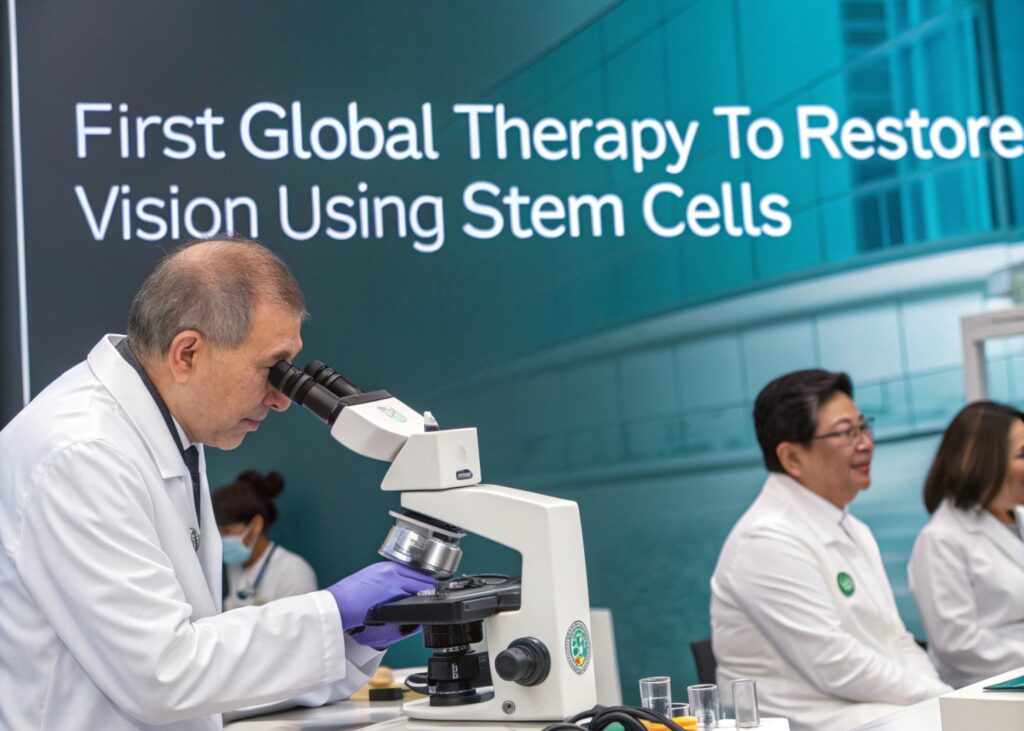World’s first stem cell therapy to restore vision
Using induced pluripotent stem cells, researchers have obtained sheets of corneal epithelium to restore vision

A study recently published in The Lancet and discussed in Nature reports that three of four people with limbal stem cell deficiency (LSCD) had substantially improved vision permanently for one year after receiving a transplant of this type of cells obtained from induced pluripotent stem cells (iPSCs). The fourth person also experienced significant improvement, but it was not long-lasting.
Stem cell researcher Jeanne Loring of Scripps Research in La Jolla, California, says, “The results justify treating more patients.” LSCD, with the resulting loss of limbal stem cells at the edge of the cornea, severely impairs vision and is difficult to treat. The work we are referring to reports the first time that iPSCs have been used to treat this condition.
Maintaining the cornea’s outer layer requires stem cells found in the so-called limbal ring surrounding the iris. If these decrease or run out, the so-called limbal stem cell deficiency occurs, and this causes blindness due to the scar tissue that covers the cornea. Its origin can be genetic, due to trauma or autoimmune.
Corneal cell transplants from stem cells extracted from the healthy eye or cadaver transplants are usually used to treat LSCD. In the first case, it is an invasive procedure with variable results; we can find a possible immunological rejection in the second.
Kohji Nishida, an ophthalmologist at Osaka University (Japan), and his colleagues used iPSCs for these transplants. A thin, transparent film was formed from blood cells from a healthy donor that had been reprogrammed to a quasi-embryonic state and converted back into corneal epithelial cells.
The subjects were four people: two women and two men aged between 39 and 72 with LSCD in both eyes. The scar tissue layer was scraped off one eye, then epithelial sheets from a donor were sutured, and the eye was covered with a soft contact lens.
It should be noted that, two years after the transplant, none of the recipients had suffered serious side effects. In particular, no tumors appeared, a possible characteristic when working with pluripotent cells such as iPSCs. On the other hand, there were no cases of immune rejection, even in the two participants who were not treated with immunosuppressants. Kapil Bharti, a translational stem cell researcher at the National Eye Institute of the National Institutes of Health in Bethesda, Maryland, calls the results impressive, saying, “It’s important and a relief to see that the grafts were not rejected,” but stresses that further trials are needed to ensure the safety of such procedures.
Most notably, all participants saw substantial immediate improvement in vision, and the area affected by LSCD shrank. This improvement was permanent in three of the four study subjects. Only one showed slight declines in the year they were observed.
Bharti says the cause of the improved vision is unclear. It could indeed be due to the transplantation and proliferation of these epithelial cells in the recipient’s cornea, but it could also have been caused by the scraping away of scar tissue or by the migration of cells from the recipient to the affected area of the cornea.
Now, Nishida says they plan to conduct clinical trials in March to assess the efficacy of this procedure. Bharti says other trials using iPSCs are being conducted around the world to treat eye diseases and says: “These success stories suggest that we are going in the right direction.”
From a bioethical point of view, the use of induced pluripotent stem cells from somatic cells to obtain corneal epithelial cells in this case does not present any drawbacks and avoids the possible use of embryonic stem cells, with the consequent destruction of an incipient human life. In addition, from a biotechnological point of view, it has not caused excessive cell proliferation that gives rise to tumors, as has been proven in this study.
Related

Francis. The Human and Religious Imprint of a Papacy
Isabel Orellana
24 April, 2025
5 min

Cardinal Felipe Arizmendi: With the Risen Christ, There Is Hope
Felipe Arizmendi
24 April, 2025
6 min

You Didn’t Give Up
Exaudi Staff
23 April, 2025
2 min

Sing, pray, give thanks
Mar Dorrio
23 April, 2025
2 min
 (EN)
(EN)
 (ES)
(ES)
 (IT)
(IT)

